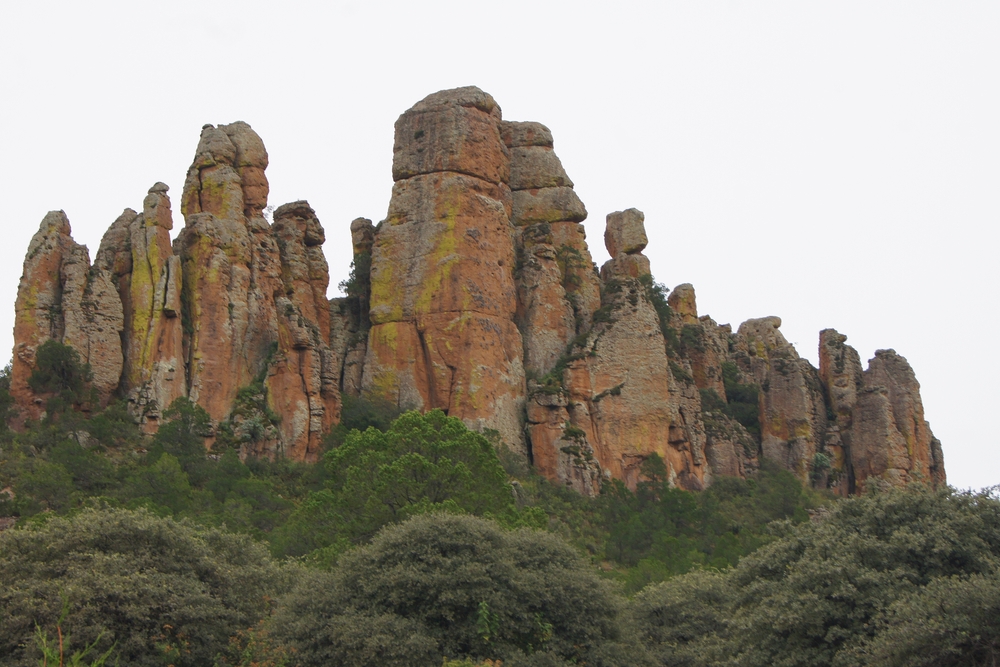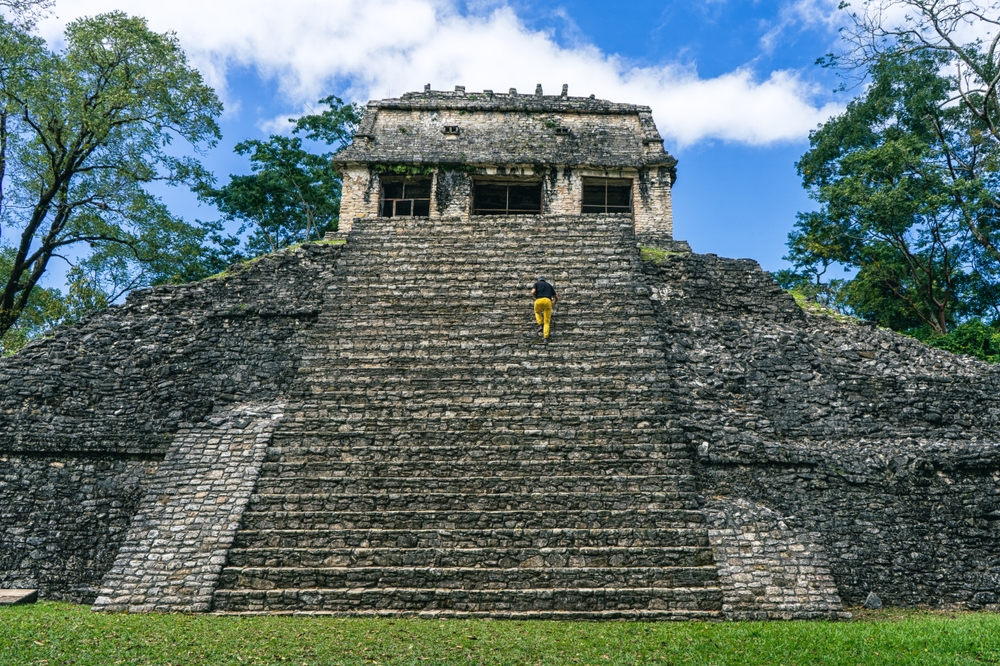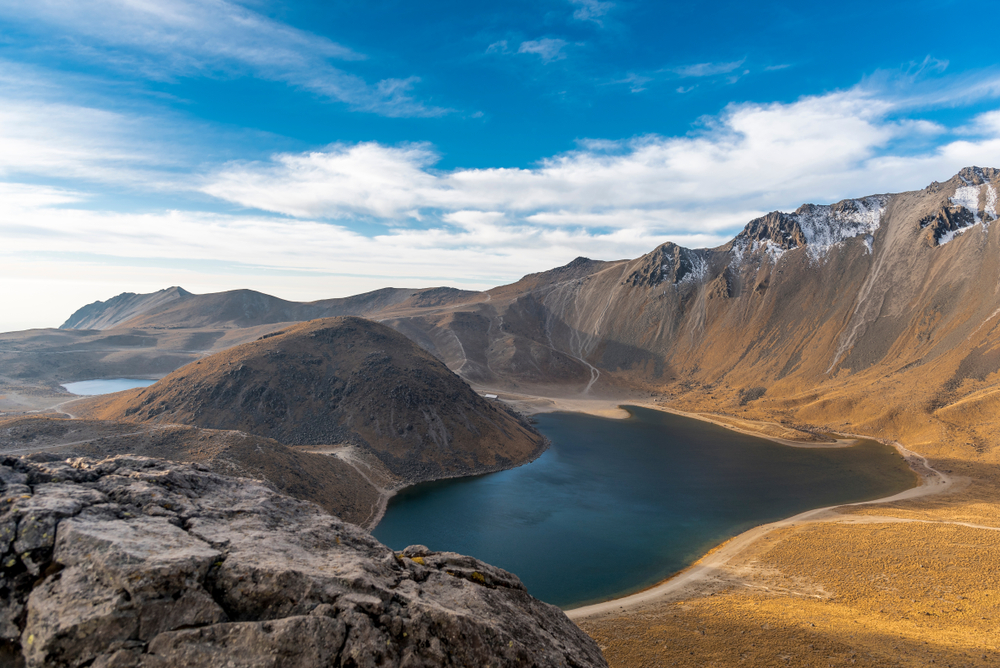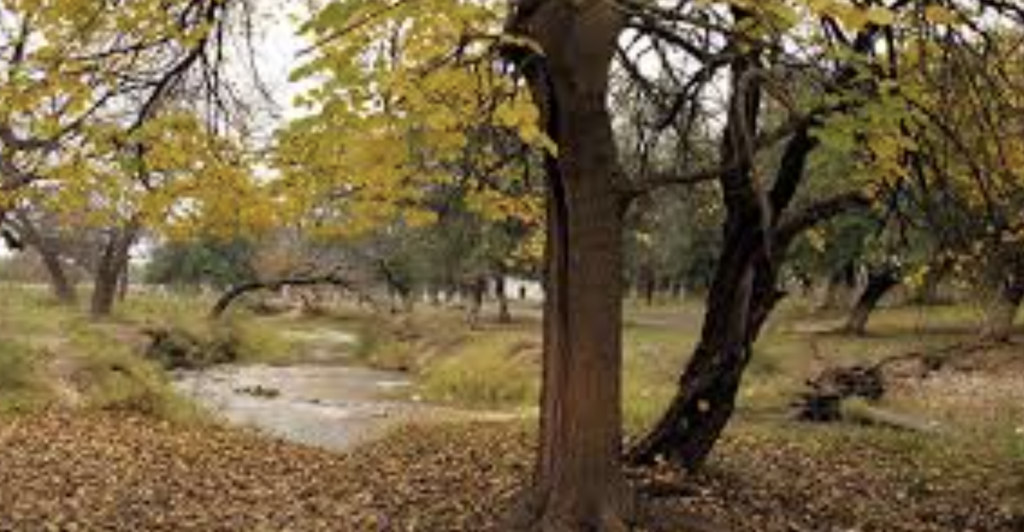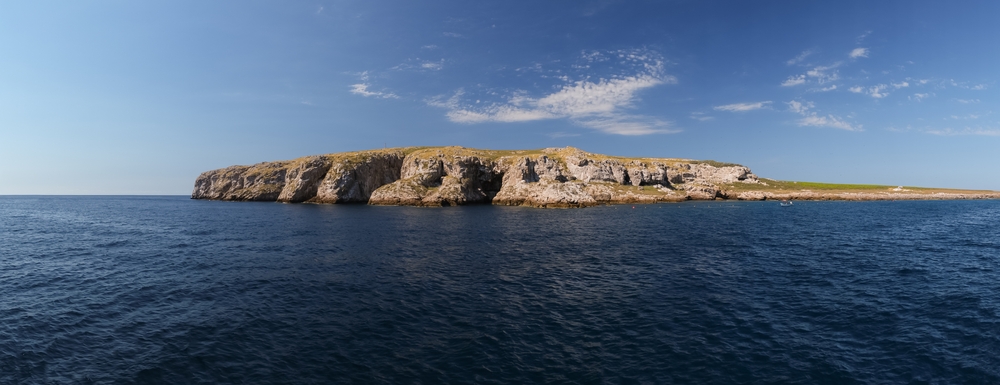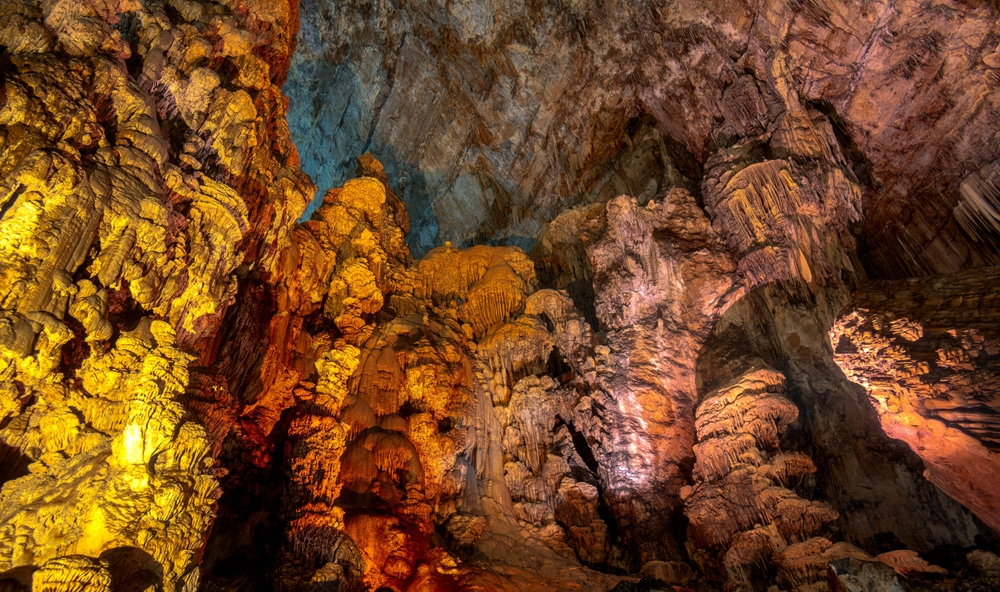Sierra de Órganos Overview
Sierra de Órganos National Park, located in the state of Zacatecas, Mexico, spans approximately 10.7 square miles (27.7 square kilometers). Its name, meaning “Mountain Range of Organs,” derives from the park’s striking rock formations, which resemble the pipes of an organ.
Situated near the town of Sombrerete, this park is known for its rugged and dramatic landscapes characterized by towering rock columns, deep canyons, and expansive desert plateaus. The rock formations, sculpted by centuries of erosion, create a surreal and almost otherworldly environment, with hues of red, orange, and brown that shift throughout the day under the changing sunlight.
Scattered amid the rock formations, dense clusters of oak and pine trees provide shade and contrast against the arid surroundings, while desert flora such as agave and yucca thrive in the drier areas.
The park is home to a variety of wildlife, making it an excellent destination for nature enthusiasts and wildlife observers. Among the mammals that inhabit the region are white-tailed deer, bobcats, coyotes, and ringtails. Smaller species such as rabbits and squirrels are commonly spotted in the more vegetated areas.
Birdwatchers can enjoy sightings of raptors like the golden eagle, peregrine falcon, and red-tailed hawk, as well as an array of smaller birds that nest among the rock formations and trees. The diversity of species in this arid yet ecologically rich environment underscores the park’s importance as a protected natural area.
One of the park’s most popular features is its striking rock formations, which attract visitors looking to explore and photograph the dramatic landscapes. These towering stone pillars, formed by volcanic activity and centuries of erosion, provide a unique backdrop for hiking and climbing adventures.
Several scenic viewpoints throughout the park offer breathtaking panoramic views of the rugged terrain, particularly at sunrise and sunset when the rocks take on a golden glow. Due to its distinctive and cinematic scenery, the park has also been used as a filming location for Western movies, adding to its cultural appeal.
Visitors can experience the park through various outdoor activities, including hiking, rock climbing, and camping. Several trails wind through the rock formations, offering routes for both casual hikers and experienced adventurers.
Camping within the park allows visitors to immerse themselves in the serene environment and enjoy stargazing under the clear night skies. Photography enthusiasts will find countless opportunities to capture the park’s stunning landscapes, while those interested in birdwatching can spot a range of species in their natural habitat. The park also attracts geology enthusiasts, who appreciate its unique rock formations and volcanic history.
Conservation efforts within Sierra de Órganos National Park focus on protecting its fragile ecosystem from human impact and environmental threats. Although relatively remote, the park faces challenges related to illegal logging, climate change, and habitat degradation.
Park authorities and local conservation groups work together to monitor wildlife populations, preserve native vegetation, and promote sustainable tourism. Educational programs and guided tours help raise awareness about the importance of conservation, ensuring that visitors appreciate and respect the park’s natural beauty. Efforts to maintain the park’s pristine condition have been largely successful, with continued measures in place to support its long-term preservation.








































































